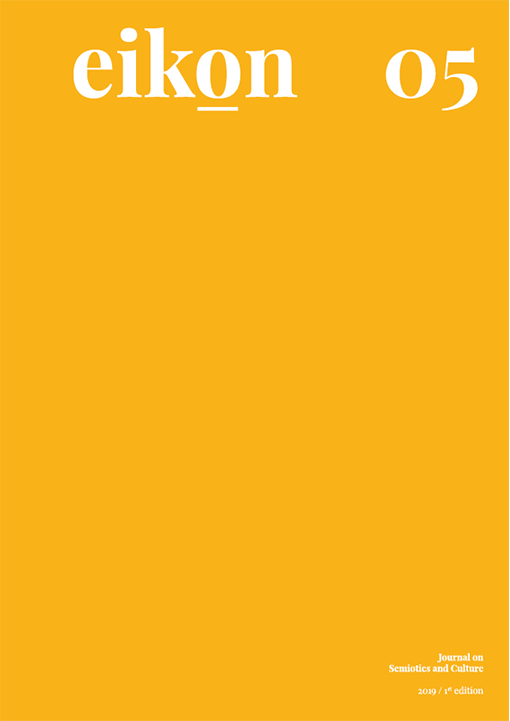Engaging communication: organizational strategies based on the construction of narratives
Keywords:
Organizational communication, Narrative, Narratology, Engagement, FondationAbstract
This article examines the role of organizational narratives in promoting engagement. The hermeneutic perspective (Ricouer, 1983; 1986) is put in place by aiming at understanding the organizational narratives, its capacity for argumentation and mobilization for action. Seeking to answer the proposed problematic, we have mobilized various studies, notably narratology (Todorov, 1969, Bremond, 1973, Adam, 1985), the narrative perspective of organizations (D’Almeida, 2001), the theory of the text (Barthes, 1974), the theory of action (Parsons, 1978) and the theory of speech acts (Austin, 1962, Searle, 1969). The investigation is focused on the argumentative function and the mobilizing capacity of the narratives focused on the study of platelets produced and disseminated by the Cité Internationale Universitaire de Paris Foundation (CIUP) in order to observe the promotion of the commitment entailed by the construction of stories aimed at patron support.
References
Adam, J.-M. (1985). Le texte narratif. Nathan.
Adam, J.-M. (1996). Le récit. Paris : PUF.
Austin, J. L. (1965). How to do Things with words. New York: Oxford University Press.
Barthes, R. (1974), Théorie du texte. En ligne: http://asl.univ-montp3.fr/e41slym/Barthes_THEORIE_DU_TEXTE.pdf. Consulté le 19 février 2012.
Bernard, F. (2007). Communication engageante, environnement et écocitoyenneté : un exemple des « migrations conceptuelles » entre SIC et psychologie sociale . Communication et organisation, 31, 27-41.
Bernard, F. & Joule, R.V. (2005). Le pluralisme méthodologique en Sciences de la Information et de la Communication à l’épreuve de la « communication engageante ». Questions de communication, 7, 185-207.
Charaudeau, P. (1997). Le discours d’information médiatique. La construction du miroir social. Paris : Nathan.
Czarniawska, B. (1998), A narrative approach to organization studies. Thousand Oaks, CA: Sage.
D’Almeida N. (2001). Les promesses de la communication. Paris: PUF.
D’Almeida N. (2004). Les organisations entre récits et médias. Canadian Journal of Communication, 29(1), 25-46.
D’Almeida, N. (2006). La perspective narratologique en organisations. In : Responsabilité sociale : vers une nouvelle communication des entreprises ? Lille : Ed. du Septentrion.
Foucault, M. (1969). L’archéologie du savoir. Paris : Gallimard.
Giroux, N. & Marroquin, L. (2005). L’approche narrative des organisations. Revue Française de Gestion, 6(159), 15-42.
Greimas, A. J. (1966). Éléments pour une théorie de l'interprétation du récit mythique. In: Communications, 8, 28-59.
Joule, R. V. & Beauvois, J. L. (1998). La soumission librement consentie. Paris, PUF.
Lyotard, J.-F. (1979). La condition postmoderne. Paris: Minuit.
Parsons, T. (1937). The Structure of Social Action. New York: McGraw-Hill.
Parsons, T. (1978). Action Theory and the Human Condition. New York: Free Press.
Propp, V. (1928). Morphologie du conte. Paris: Ed. Seuil [1970].
Ricœur, P. (1983). Temps et récit I : L’intrigue et le récit historique. Paris : Seuil.
Ricoeur, P. (1986). Du texte à l’action. Paris: Ed. du Seuil.
Ricoeur, P. (1990). Soi-même comme un autre. Paris: Seuil.
Santos, L. C. (2012). Le récit organisationnel et la promotion de l’engagement. Mémoire (Master Recherche). CELSA, Université Paris-Sorbonne, Paris, 115p.
Searle, J. R. (1969). Speech acts. Cambridge: Cambridge University Press.
Searle, J. R. (1979). Expression and meaning. Cambridge: Cambridge University Press.
Todorov, T. (1968). La grammaire du récit. Langages, 12, 94-102.
White, H. (1987). The content of the form: narrative discourse and historical representation. Baltimore: Johns Hopkins.
Wright, G. H. (1963). Norm and action: a logical enquiry. London: Routledge & Kegan Paul.
Downloads
Published
Issue
Section
License
Authors who publish with this journal agree to the following terms:
- Authors retain copyright and grant the journal right of first publication with the work simultaneously licensed under a Creative Commons Attribution License that allows others to share the work with an acknowledgement of the work's authorship and initial publication in this journal.
- Authors are able to enter into separate, additional contractual arrangements for the non-exclusive distribution of the journal's published version of the work (e.g., post it to an institutional repository or publish it in a book), with an acknowledgement of its initial publication in this journal.
- Authors are permitted and encouraged to post their work online (e.g., in institutional repositories or on their website) prior to and during the submission process, as it can lead to productive exchanges, as well as earlier and greater citation of published work (See The Effect of Open Access).

